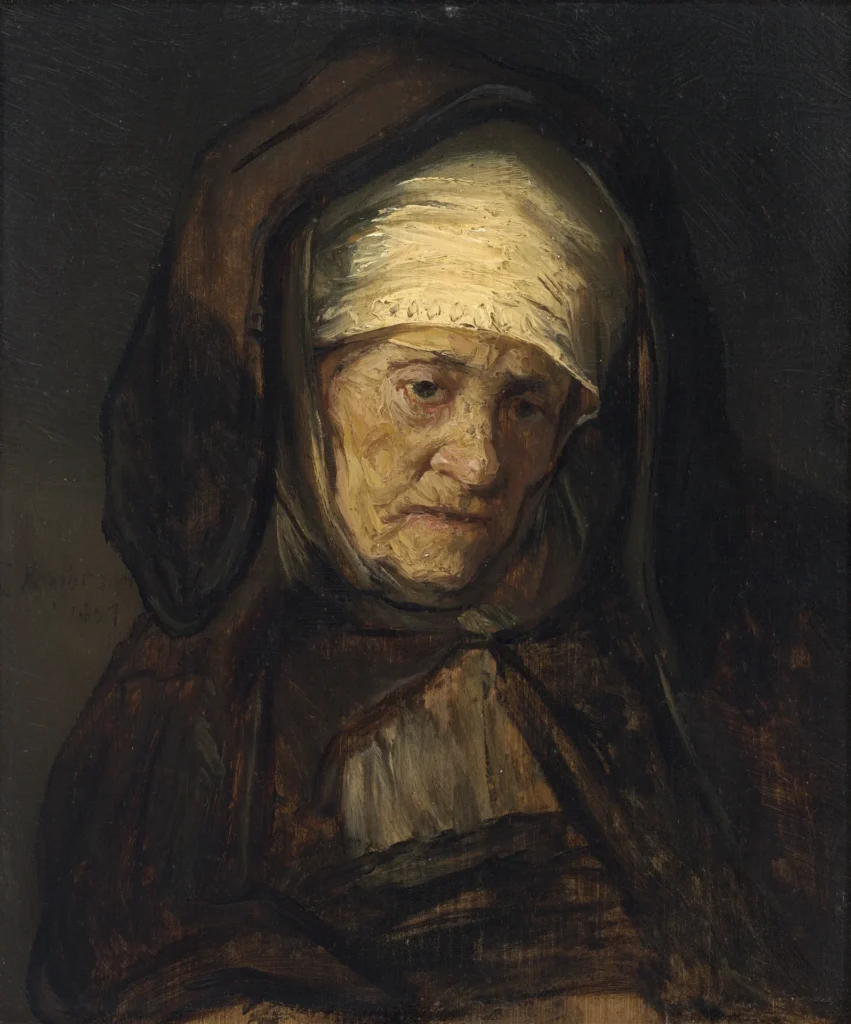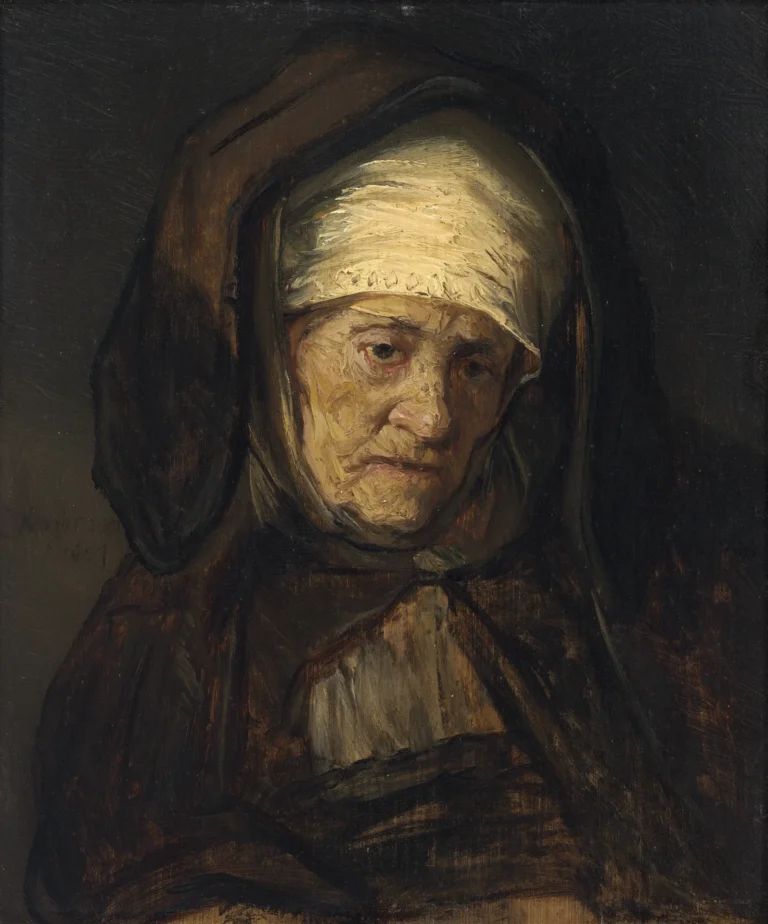Head of an Aged Woman (1655-1660)
The Head of an Aged Woman by Rembrandt van Rijn is a poignant and intimate portrayal that reflects the artist's mastery of light and shadow. Created between 1655 and 1660, this artwork captures the weathered features of an elderly woman, emphasizing her emotional depth and life experience. Rembrandt's ability to infuse his subjects with a sense of humanity and narrative sets this work apart, making it a pivotal piece in understanding his later career and stylistic evolution.
1655 - 1660
About the Artwork
Rembrandt's Head of an Aged Woman stands as a testament to his profound understanding of the human condition. Created in the midst of his career, these years were particularly transformative for the artist, who often found inspiration in the faces that surrounded him. By focusing on the aged woman's expression, he invites viewers to ponder her untold stories, capturing a moment of vulnerability that transcends time. This piece reflects his mastery in using chiaroscuro, dramatically illuminating the contours of her face to evoke an emotional response, characteristic of his late style.
Did You Know
Rembrandt’s innovative use of chiaroscuro, the contrast of light and shadow, revolutionized portrait painting. It allowed him to create depth and volume, giving his subjects a more lifelike presence.
Rembrandt often portrayed the elderly, capturing their unique beauty and wisdom. This focus reflects his deep empathy and understanding of life’s fragility, which resonates strongly in Head of an Aged Woman.
Rembrandt’s style has influenced countless artists over the centuries. His ability to portray human emotions profoundly impacted the development of modern portrait painting, inspiring artists like Vincent van Gogh and Pablo Picasso.
Liked what you see? Add it to your collection.
Enjoyed reading? Share it.
... continued
The artwork Head of an Aged Woman by Rembrandt van Rijn, created between 1655-1660, is not extensively detailed in the provided sources, but here are some general insights that might be relevant:
Rembrandt was known for his portraits and character studies, often capturing the essence and emotion of his subjects. During the period of 1655-1660, Rembrandt continued to produce portraits that were characterized by their depth and emotional expressiveness
While the specific work Head of an Aged Woman is not mentioned, Rembrandt's later works, including those from the 1650s and 1660s, often featured strong lighting and a focus on the subject's expression, which was a hallmark of his style.










